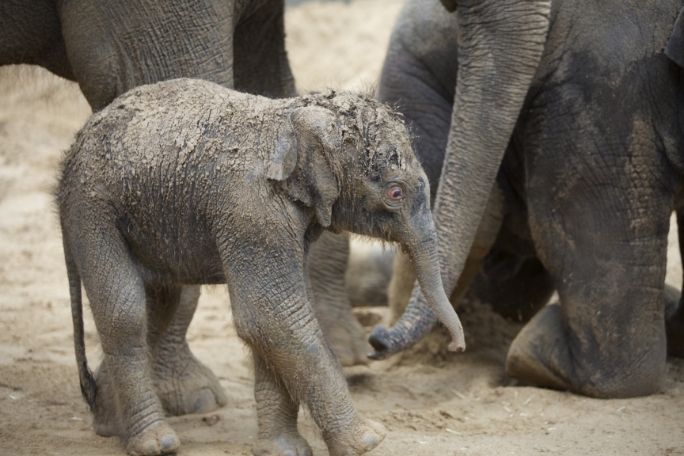Lesson summary
In this lesson, students tune into the topic of zoos and animal welfare. The class begins by participating in a ‘Stand On The Line’ barometer activity about their understanding and thoughts on animals and zoos. They are then introduced to the topic of animal welfare by engaging in a guided discussion around a clip. Following on from this discussion, students will think about some of the good and bad parts of animals living in zoos. Finally, students will select an animal and will design an enclosure to best suit this animal’s physical, social and emotional needs. Students have the opportunity to then share their designs with their classmates.
Learning intentions:
Students will...
- understand what animal welfare is
- understand that there are positives and negatives for animals living in zoos
Success criteria:
Students can...
- participate in class discussions about their understanding of zoos
- express an idea through drawing
- work independently
- apply critical thinking skills to a range of issues
- respectfully listen to and express ideas about complex issues
Lesson guides and printables
Lesson details
Curriculum mapping
Australian curriculum content descriptions:
Foundation Science:
- Living things have basic needs, including food and water (ACSSU002)
Year 1 Science:
- Living things live in different places where their needs are met (ACSSU211)
- People use science in their daily lives, including when caring for their environment and living things (ACSHE022)
Year 2 Science:
- Living things grow, change and have offspring similar to themselves (ACSSU030)
- People use science in their daily lives, including when caring for their environment and living things (ACSHE035)
Year 3 Science:
- Living things can be grouped on the basis of observable features and can be distinguished from non-living things (ACSSU044)
- Science knowledge helps people to understand the effect of their actions (ACSHE051)
Year 4 Science:
- Living things depend on each other and the environment to survive (ACSSU073)
- Science knowledge helps people to understand the effect of their actions (ACSHE062)
Year 5 Science:
- Living things have structural features and adaptations that help them to survive in their environment (ACSSU043)
Year 6 Science:
- The growth and survival of living things are affected by physical conditions of their environment (ACSSU094)
Syllabus outcomes: STe-8NE, ST1-11LW, ST1-10LW, ST2-10LW, ST2-11LW, ST3-10LW, ST3-11LW
General capabilities: Critical and creative thinking, Ethical understanding, Empathy
Cross-curriculum priority: Sustainability OI.2, OI.7, OI.9
Relevant parts of Foundation Science achievement standards: Students suggest how the environment affects them and other living things.
Relevant parts of Year 1 Science achievement standards: Students describe changes in their local environment and how different places meet the needs of living things.
Relevant parts of Year 2 Science achievement standards: Students describe changes to living things and describe examples of where science is used in people’s daily lives.
Relevant parts of Year 3 Science achievement standards: Students group living things based on observable features and describe how they can use science investigations to respond to questions.
Relevant parts of Year 4 Science achievement standards: Students describe relationships that assist the survival of living thing, and identify when science is used to understand the effect of their actions.
Relevant parts of Year 5 Science achievement standards: Students analyse how the form of living things enables them to function in their environments.
Relevant parts of Year 6 Science achievement standards: Students describe and predict the effect of environmental changes on individual living things.
Unit of work: Fighting Extinction – Primary
Time required: 60 mins
Level of teacher scaffolding: Medium – lead students in guided discussion, guide students through activities
Resources required
- A device capable of presenting a video to the class
- One printed copy of the Learning Journal for each student
- String, masking tape or chalk
- Optional for younger students: Animal Needs – Primate, Animal Needs – Elephant, Animal Needs – Seal and Animal Needs – Wolf (see Part D step 1 of this lesson for elaboration on how these flashcards can be used)
Skills
- Communication
- Creativity
- Critical thinking
- Empathy
- Ethical understanding
- Problem solving
Additional info
This lesson has been developed in partnership with Zoos Victoria. Zoos Victoria is a zoo-based conservation organisation whose mission is to fight extinction and support Victorians to be the world’s most wildlife friendly community through being caring, informed and active. Zoos Victoria operate three zoos: Werribee Open Range Zoo, Melbourne Zoo and Healesville Sanctuary. Click here to find out more about Zoos Victoria and their work on fighting extinction.


Welcome back!
Don't have an account yet?
Log in with:
By signing up to Cool.org you consent and agree to Cool's privacy policy to
store, manage and process your personal information. To read more, please see
our privacy policy here(Opens in new tab).
Create your free Cool.org account.
Many of our resources are free, with an option to upgrade to Cool+ for premium content.
Already have an account?
Sign up with:
By signing up to Cool.org you consent and agree to Cool's privacy policy to
store, manage and process your personal information. To read more, please see
our privacy policy here(Opens in new tab).